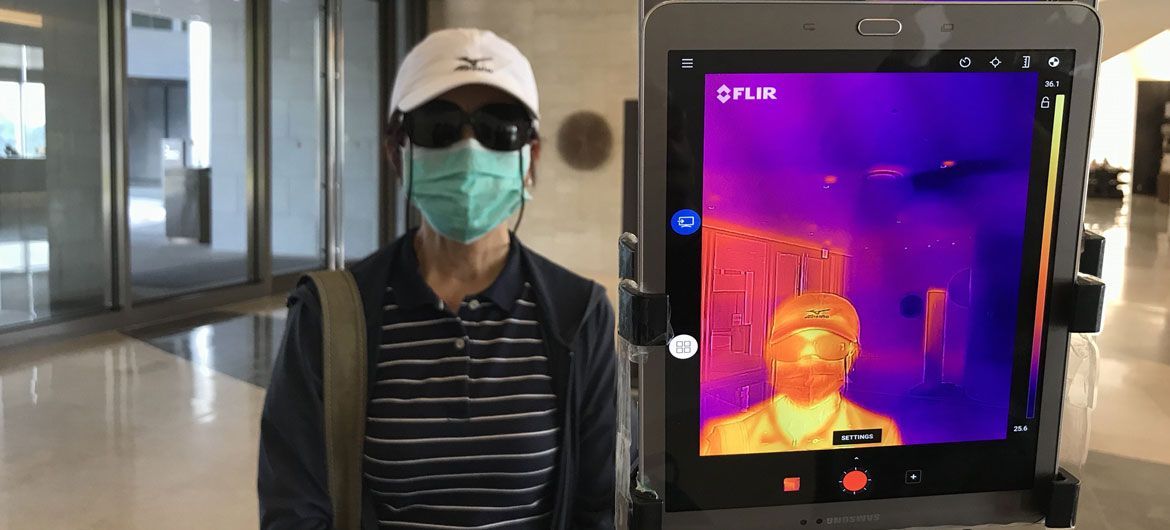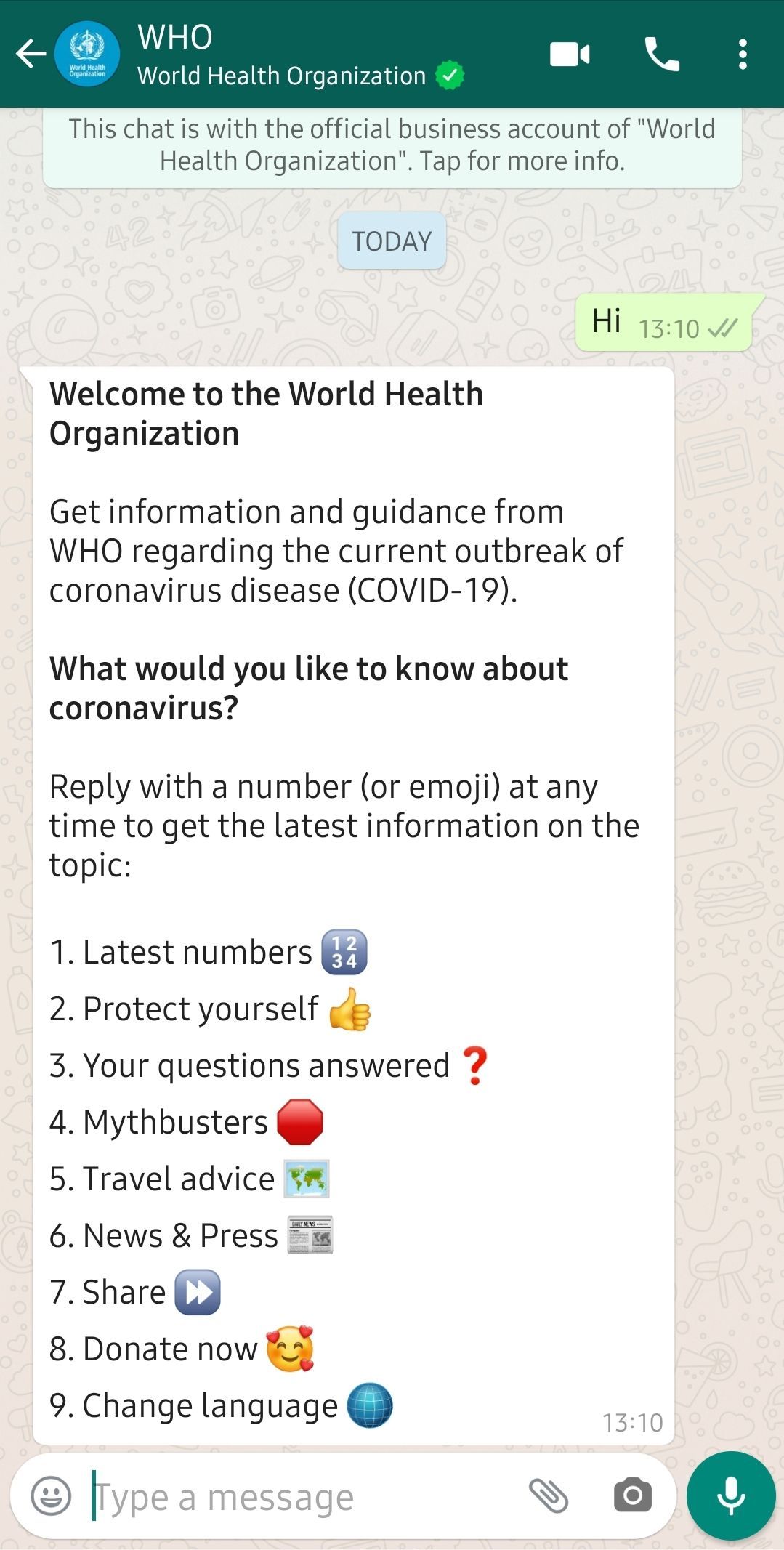How modern technology is helping in the fight against COVID-19
Technology plays an important role in our lives. Perhaps, much more than we acknowledge. In this article, we share seven ways in which technology has been deployed to combat this global pandemic called Coronavirus disease.

Technology plays an important role in our lives. Perhaps, much more than we acknowledge. In this article, we share seven ways in which technology has been deployed to combat this global pandemic called Coronavirus disease.
The Coronavirus disease (COVID-19) outbreak which began in Wuhan, China has in the space of four months spread to over [196 countries and territories around the world](https://www.worldometers.info/coronavirus/#countries), including 1 international conveyance (the Diamond Princess cruise ship harbored in Yokohama, Japan).As at the time of writing this article, there were 272,181 active coronavirus cases and 119,988 deaths (a death rate of about 44%), with Italy having the highest number of deaths (6,077) so far.
Establishments worldwide are being shutdown as everyone has been advised to stay at home in order to slow down and eventually stop the spread of the coronavirus.
All hands are on deck to faze out this virus. Professionals and organisations across different industries, not just the health sector, have come together to contain this outbreak. Here is how technology has been put to use, thus far: smart helmets & patrol drones, apps & websites to track and monitor infected persons, collaboration software for remote working, social media platforms for news sharing and keep loved ones connected, e-commerce, e-registry and other tools for early detection of COVID-19 virus.
* **Smart helmets and Patrol drones**: Police in China are now [wearing helmets equipped with infrared cameras](https://www.dailymail.co.uk/news/article-8073451/Chinese-police-wear-smart-helmets-detect-pedestrians-fevers-amid-coronavirus-crisis.html) for temperature screening amid the coronavirus epidemic. Liu Tao, a Chengdu official who makes use of the helmet in his work as an epidemic prevention and control officer, said a small alarm is triggered when somebody is scanned with a body temperature higher than 37.3 degrees Celsius. These smart helmets are powered by Artificial Intelligence and have a camera which can scan the body temperatures of anyone within a 16-foot radius. China also made use of drones to monitor movement on the streets and send people back into their homes in order to control the spread of the virus.
While it has proven to be useful in curbing the spread of the coronavirus, a downside is that these could easily lead to the release of private information, stigmatization of certain places etc.
There have also been calls for innovative tech solutions that can aid in curbing this pandemic. An example is the #COVID19InnovationChallenge organized by Ventures Platform and Lagos State Science and Research and Innovation Council (LASRIC) to find solutions to the spread of COVID-19 in Nigeria.
* **Remote working, learning and even socializing** has become compulsory for majority of the world as many countries have instructed all schools and business places providing no-essential services to shut down indefinitely, pending the time a solution is found to the coronavirus outbreak. However, in order to still keep things moving in whatever way possible, some of these organizations have fully moved all activities to virtual platforms. An example is the [Zoom app](https://zoom.us/docs/en-us/covid19.html) a platform that supports remote work, online learning, virtual appointment with doctors and even [parties](https://www.bbc.com/news/av/technology-51999522/coronavirus-frozen-birthday-party-saved-by-zoom-video-chat-app). All of which help in encouraging people to #stayathome. A downside is that the app has experienced a significant downgrade in ratings especially as some students, annoyed by the fact that they still had to continue school activities, flooded the app's review section with [negative reviews](https://9to5google.com/2020/03/18/zoom-android-app-negative-reviews-coronavirus/). [Google classroom](https://www.androidpolice.com/2020/03/19/like-zoom-google-classroom-apps-rating-takes-massive-coronavirus-nosedive/) also fell to a rating of 2 stars from a relative high of 4.3 stars just two months back. However all of these are being corrected by [Google](https://www.androidpolice.com/2020/03/24/zooms-android-app-rating-has-been-absolutely-destroyed-by-coronavirus/#1).* **Social media platforms** like Twitter, Facebook, and Whatsapp have also played a major role in helping people stay connected to one another despite the social distancing currently being practiced and also to provide reliable information on the COVID-19. These platforms are making efforts to [combat the spread of false information](https://firstdraftnews.org/latest/how-social-media-platforms-are-responding-to-the-coronavirus-infodemic/). The WHO recently launched a [chat-bot](https://www.pulse.com.gh/bi/tech/the-world-health-organization-has-launched-a-whatsapp-chatbot-to-warn-people-about/4lrk7c1) via Whatsapp that provides information about current infection rates, how to stay protected, and frequently asked questions about the disease.
As the world waits with bated breath for things to return to normal, ensure you also play your own part by following the guidelines provided by the World Health Organization: wash your hands frequently, maintain social distancing, avoid touching eyes, nose and mouth, practice respiratory hygiene, and if you have fever, cough and difficulty breathing, seek medical care early.
Cover Photo: UN News/Jing Zhang, An infrared thermometer is used to check the temperature of guests at a hotel entrance in Yangon, Myanmar.






